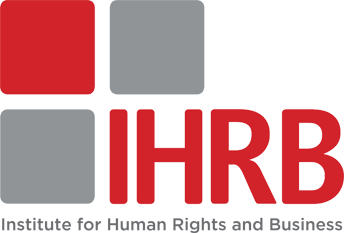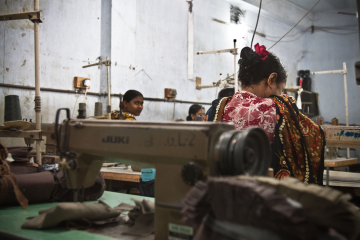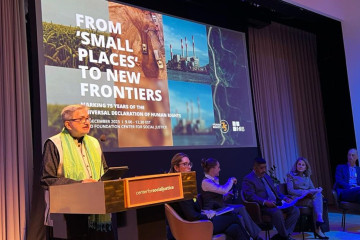On International Women’s Day, many cosmetic steps will be announced: there will be breathlessly tokenist gestures, such as an oil company changing its name for a day at one gas station, and a prime minister giving his social media handle to women for one day.
After that, it will be business as usual.
And that’s the great pity, and a constant reminder that the road is long. As the idiom says, a woman’s work is never done – and even 25 years after the Beijing Platform of Action and in spite of many companies endorsing the Women’s Empowerment Principles, equal treatment of women, respect for women’s dignity, and equality of opportunity for women at work, remain a distant dream.
That it is a matter of shame is obvious; that the injustice must end soon is one of the great challenges of our time.
There are 33 female CEOs in the top 500 global companies. In the UK, there are more CEOs called Steve than there are female CEOs.
The reality is stark
Representation of women at senior levels of companies remains woefully inadequate. When Fortune magazine unveiledits list of the world’s largest corporations last year, it celebrated a "record" – that there were 33 women CEOs. That’s 33 out of 500, up from 24 the previous year. An increase of 33% sounds better than the fact that only one out of 16 of the world’s largest companies is run by a woman. This is the ‘soft bigotry’ of low expectations – deeply patronising and profoundly unfair.
The story across the Atlantic is no better: of the top 100 companies listed in the UK, only six had a woman as CEO. In the UK, there are more CEOs called Steve or Steven, than there are female CEOs. That figure (six) is down from seven last year. In developing economies the situation is worse. In India, where the government requires that corporations should adhere to a quota of women on the board, many male owners of companies have appointed their female relatives to the boards. Only three Indian companies among the top 100 have women CEOs.
Women face barriers to corporate advancement much before they reach the glass-ceiling – the known barrier in middle management, which is not supposed to exist and yet does, preventing the rise of women and minorities in a corporate hierarchy.
To be sure, like men, most women don’t join companies to become CEOs. But they have the right to expect that their merit will get recognised and they will be able to advance based on their performance.
Women face barriers at work at all levels – recruitment, mentoring, career advancement, pay parity, opportunities for promotion, and the ultimate recognition – being able to head an organisation. Sexual harassment risk exists at all levels, so rampant in London’s financial district for example that pubs have begun to put up posters to educate men. And the impacts deepen further down the supply chain. At tea plantations for example, many women continue to be harassed sexually, as these accounts from Kenya and India show, though some companies are beginning to address the issue. At garment factories, women face bullying and lack of union representation.
Structural and cognitive biases abound
Two recent studies partly explain why gender-based risks are so endemic. Neither of them shows that there are any easy fixes, but both point out why systemic changes are necessary before the statistics – the indicators by which we measure progress – might change.
Research from McKinsey & Co, the consulting firm, and LeanIn.org, an American non-profit that champions women empowerment in the corporate sector, shows that women face barriers to corporate advancement much before they reach the glass-ceiling – the known barrier in middle management, which is not supposed to exist and yet does, preventing the rise of women and minorities in a corporate hierarchy. The study looked at figures from 329 companies which collectively employ 13 million people. Barriers exist not because women pause careers to raise children, but because of other systemic obstacles on the management ladder.
The most prominent barrier is bias – “who you know, who’s like you, or who performs and operates the same way you perform and operate, whose style is more similar,” Carolyn Tastad, group president of Procter & Gamble’s North American operations told The Wall Street Journal. Companies have to figure out ways to pull the talent up through the pipeline, she said. Cognitive and unconscious biases get in the way, leading to sub-optimal decisions.
Cognitive and unconscious biases get in the way, leading to sub-optimal decisions.
According to the study, even though men and women increasingly enter the workforce in somewhat similar numbers (and in many fields of study, women outnumber men at colleges), men outnumber women 2 to 1 when they get the first promotion.
- For example, while 47.8% of corporate intake comprises women, at managerial level, the figure drops to 38.2%. This is not due to attrition (men and women leave companies in similar proportions at each stage of corporate hierarchy), nor due to lack of ambition (nearly seven out of ten men and women want higher responsibilities).
- Forty percent of women (and only 14% of men) believe this is because women are judged by different standards.
- A third of the women believe they don’t have champions helping them advance (only 12% of the men think so).
- Only 13% of women think there aren’t sufficient qualified women (21% of men think that way).
- And a tiny percentage of men and women believe women don’t aspire enough. In other words, this is about perceptions and attitudes – or structural and cognitive biases.
The effect is that women don’t get the opportunities to lead teams, perform tasks that enable advancement, and are often excluded from meetings, not necessarily by design. As women do not get the opportunity to show their capabilities, they get passed over for promotions, and once they get pregnant or take time off during childbirth, decisions are made on their behalf by others, assuming they will not be interested in work that requires long hours or travel.
The findings are sobering: less than 20% of employers saw the connection between gender gap within the organisation and the absence of women managers, even though for every 100 men who were promoted, only 72 women were being promoted.
To that, add intersectionality
To that, add intersectionality: women from racial minorities were less likely to be promoted. The study says: “Black women and women with disabilities face more barriers to advancement, get less support from managers, and receive less sponsorship than other groups of women. Not surprisingly, black women and women with disabilities are far less likely to feel they have an equal opportunity to grow and advance and are less likely to think the best opportunities go to the most deserving employees.”
This builds the leadership shortage for women in the longer run. McKinsey estimates it will take three more decades before the gap can be breached if concerted attempts are made right away. To fix that, Lareina Yee, a senior partner at McKinsey & Co., said the ‘broken bottom rung’ of the corporate ladder needs repair.
The line management roles, with responsibilities for profit and loss are stepping stones on the CEO track, and women are less likely to get those jobs than men.
Another study shows why women are less likely to become CEOs: they are less likely to be appointed to head parts of business which show a clear path towards leading the company. The line management roles, with responsibilities for profit and loss, which include heading business units, divisions, overseas operations, or a brand, are stepping stones on the CEO track, and women are less likely to get those jobs than men.
The reason women don’t get considered for line management, the study suggests, is linked to the findings of the previous study: it is due to the trade-offs that occur because of biases and ‘entrenched attitudes’ about what qualities are needed among team leaders, and unfounded assumptions about what qualities women have, in addition to other constraints, including work-life balance.
Haphazard responses
Some companies have attempted to address this, by having coaching and training programmes targeting women so that they get out of the middle management trap. While essential, these initiatives are not necessarily sufficient, and some experts believe that some of these efforts are haphazard.
A Korn Ferry study published in Harvard Business Review highlights women’s superior ability to harness teams and willingness to take risks as building blocks, and made four concrete recommendations: to identify potential for managerial role early; to encourage women to think of themselves as potential CEOs by illuminating the path forward; to ensure sponsors/champions/mentors within the organisations; to describe roles in language that’s not exclusionary; and, reassure women taking on risky assignments that if they fail, it won’t spell an end to their careers.
What these studies show is clear: women are less likely to get promoted at the first stage of their careers, and when they do advance in a company, they are likely to be in functions that do not lead them to the chief executive’s job. It is, of course, a valid – yet different – question if the conditions of women at work improves with a woman CEO. Reliable studies don’t exist. Are women less likely to face sexual harassment or bullying if the CEO is a woman? Are they less likely to become victims of sexism? Are they less likely to be ignored for promotion? Would women consumers be treated fairly? Would sexist advertising diminish? Would products and services be designed keeping women in mind, or would data bias, which favours men, continue to prevail?
We don’t yet have those answers. But having male CEOs has brought about change only at a glacial pace. Biases run deep: Angela Saini’s book, Inferior, shows how science has got women wrong, leading to erroneous conclusions about what women are capable of doing. The data bias can have catastrophic consequences. As Caroline Criado Perez revealed the pernicious effect of data bias in her brilliant book, decisions made on poor data have led to product design that has harmed women.
Given that the status quo is untenable, change is necessary. Given that diverse teams improve performance and lead to innovative solutions (including safer products), encouraging more women to take up leadership positions early, so that they remain in organisations, and ensuring that opportunities are not denied to them so that they can effectively lead organisations, are important steps companies must consider.
Stepping in the right direction
The three thrusts Melinda Gates has outlined, through her company, Pivotal Ventures, are steps in the right direction: she is investing $1 billion to dismantle barriers to women’s professional advancement; fast-track women in sectors with outsized impact on society to improve visibility; and mobilise shareholders, consumers, and employees to amplify external pressure on companies to reform.
Investors will appreciate the outcomes.
Investors will appreciate the outcomes.
For example, increasing evidence showing the advantages of gender diversity, such as greater innovation and better financial results.
However, commitment to human rights cannot be a fair-weather friend. Companies should not have policies that coincide with respecting human rights only because it makes financial sense – because the reverse cannot be true, where companies don’t respect human rights if it does not make financial sense.
Companies should commit to human rights because treating people equally and fairly is the cornerstone of civilisation, regardless of outcomes. In other words, even if human rights-consistent policies raise costs, companies should have policies that align with international human rights standards. Such commitment is essential regardless of financial incentives. Evidence shows that such organisations are rewarded by discerning consumers, employees who feel more loyal, and by markets that do not like discrimination.
Photo by Christopher Burns on Unsplash.





























The perception of ‘value’ needs to change if the World Bank’s mission is to succeed
Last week we attended the Spring Meetings of the World Bank and International Monetary Fund (IMF) in Washington, D.C. The annual IMF-World Bank meetings bring together finance ministers and central bankers from all regions as a platform for official...
26 April 2024 | Commentary
Commentary by Vasuki Shastry, Author, ESG/Strategic Communications Expert; International Advisory Council, IHRB Haley St. Dennis, Head of Just Transitions, IHRB